POLICE HOSPITAL CAMPAIGN REPORT – 3-13 MARCH – FREETOWN, SIERRA LEONE
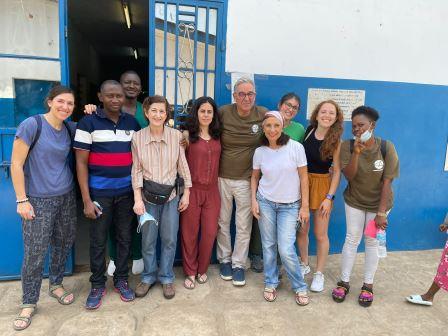
1. TECHNICAL REPORT:
DATES AND LOGISTICS DEVELOPED: The first date planned was 2-12 December 2021, entailing the purchase of air tickets from the Royal Air Maroc company, but due to the Covid pandemic and the closure of flights by Morocco it was delayed to 20-30 January, with the extension of the air closure it was delayed again to 3-13 March, the date on which it was finally carried out. This meant a change of anaesthesiologists because those who had signed up at the beginning did not obtain permission. It also meant an exponential increase in emails and whatsapp between the director of the hospital Dr. Mohamed Jalloh and myself as coordinator of the campaign, as well as between me and the volunteers. It was also necessary to update the VISAs and delay the interview with the Medical Council to obtain the relevant permits.
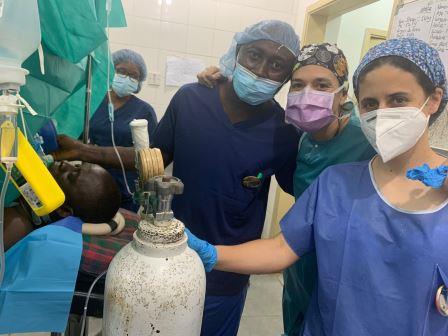
ADULT PATIENTS: A total of 85 patients between 17 and 75 years were operated.
Right inguinal hernias 32, left inguinal hernias 19, bilateral hernias 4. (Lichtenstein and Rives technique).
Femoral hernia 1
Umbilical/epigastric hernia 2
Hydroceles 7
Cryptorchidism 2
Lipomas 18
Ectopic breast 1
Knee bursitis 1
Epigastric tumour 1
Total procedures: 94
Total patients 85
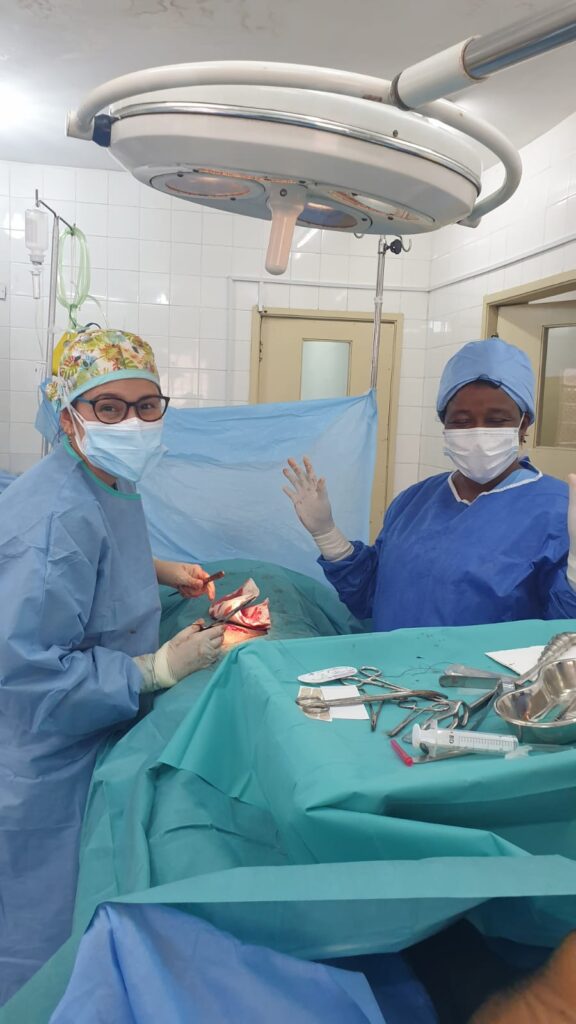
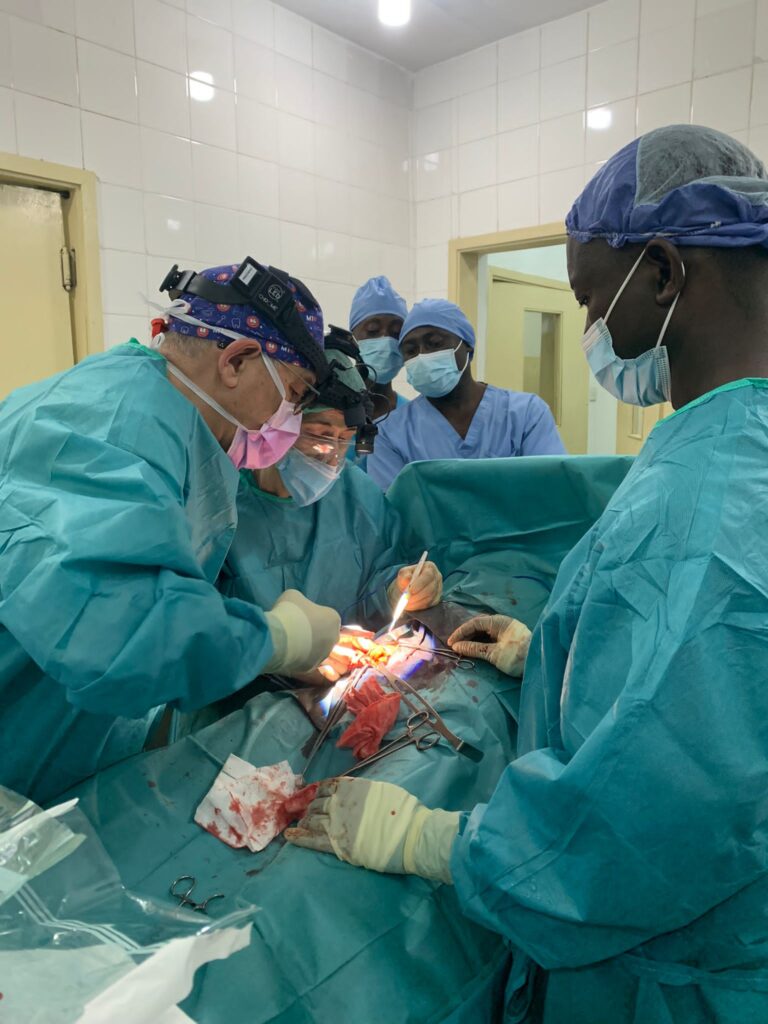
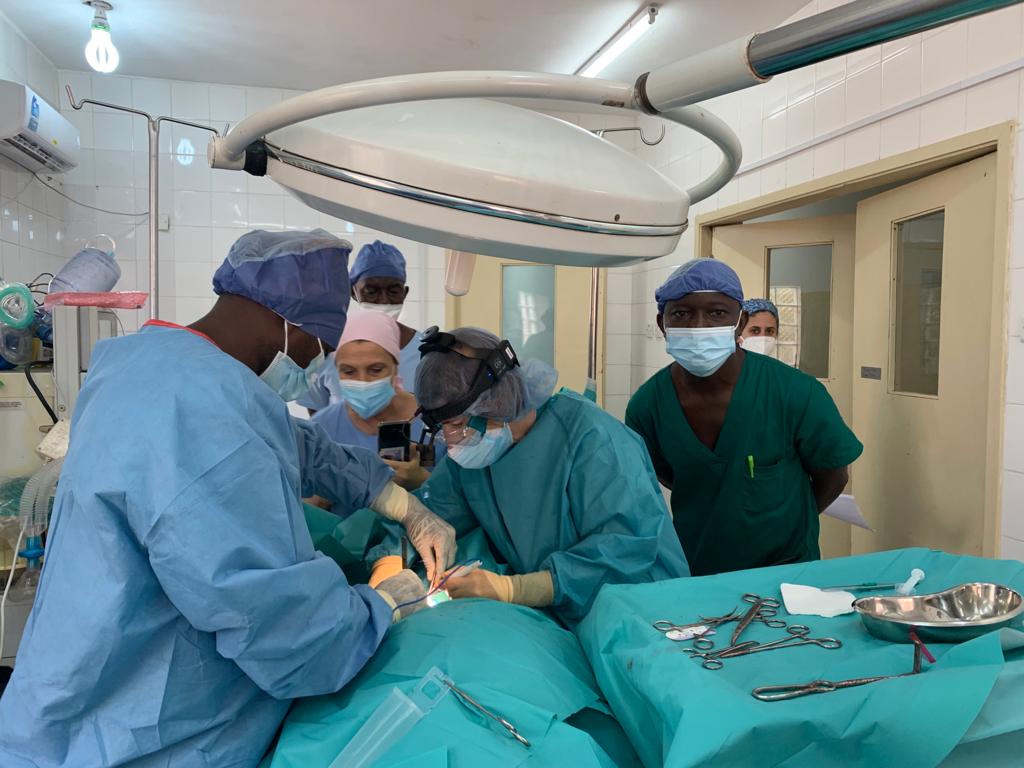
2. CAMPAIGN REPORT
THE LOCATION: The hospital is located in the capital of Sierra Leone, Garage Road, Western area, Freetown. It is a 2-storey building that has a surgical area with 2 operating theatres, a larger one with a surgical table, standing lamp (low light), ventilator (not working), O2 concentrator and scalpel generator (not working), and a smaller one with a surgical table, a photophore, diathermy generator (not working), a small area for surgical washing, a room for material on the upper floor, and 2 other rooms on the ground floor with a table for consultation and another one that was set up for eating. It has 4 hospitalisation rooms, 2 on the ground floor with 8-10 beds each for men and women, with beds with mosquito nets and a control table for the nurses, where the patients stayed after the operation. In the room on the upper floor, the patients were prepared for the operation and brought down to the operating theatre with their IVs in place. Several consultation rooms of different sizes where we evaluated the patients who had been previously recruited.
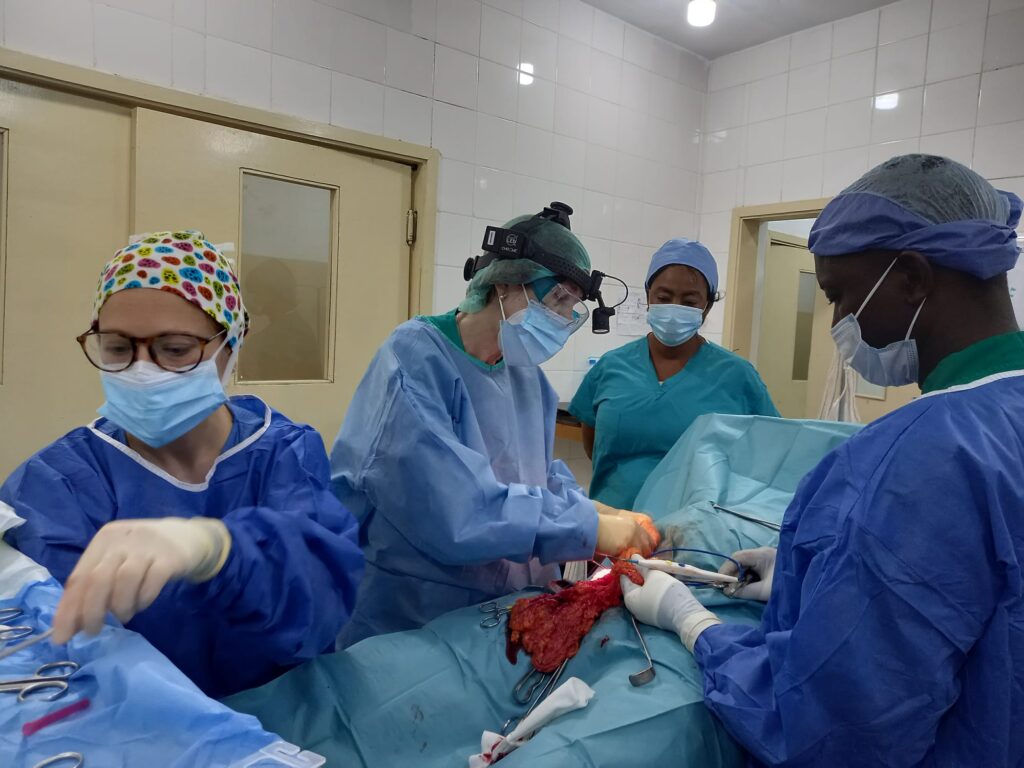
THE TEAM of volunteers was made up of
– General surgeons: Teresa Butrón (coordinator), FJavier Grau Talens, Cristina Alejandre.
– Anaesthetists: Irene Macía, Lidia Álvarez.
– Nurses: MJ Fornier Coronado, Ana Nombela.
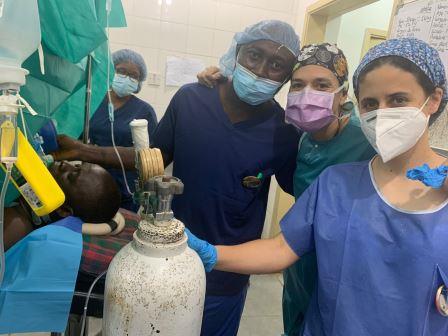
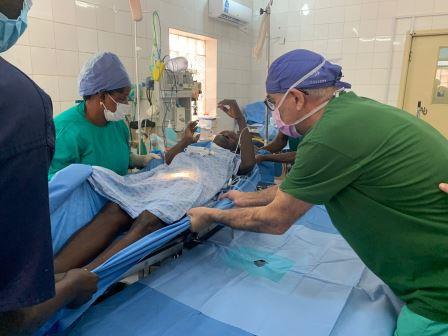
LOCAL STAFF.
Director of the hospital: Dr. Mohamed Jalloh, he provided us with the invitation letter for the campaign and the permissions from the Medical Council after sending him the documentation.
Hospital administrator Mr. Koroma, he accompanied us to the airport on arrival and departure and was always ready to help us.
Doctors: Dr Munu (only stayed for the first 2 days), Dr Samba Jalloh (acted as coordinator and helped with patient recruitment and other coordination, although he was not a member of the police, but he filled in for Dr Paul Fillie in 2019, picked us up from the airport and accompanied us to the Medical Council office, he is a member and facilitated the permits).
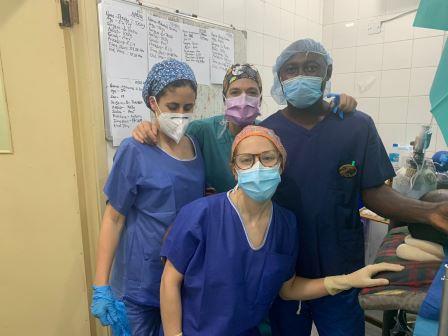
Surgical technician: Mr. Kelly Jalloh who was in the operating theatre with me and assisted in all the operations.
Anaesthetist: Dr. Matilde who was with the anaesthetists for much of the time.
Surgical supervisor nurse: Mr. Unisa who facilitated everything and solved the problems in the daily work.
Nurses and others: Abdudakar, Samuel, Icanu, Anna, Francis, etc. All with great interest, helping and participating in everything that was done.
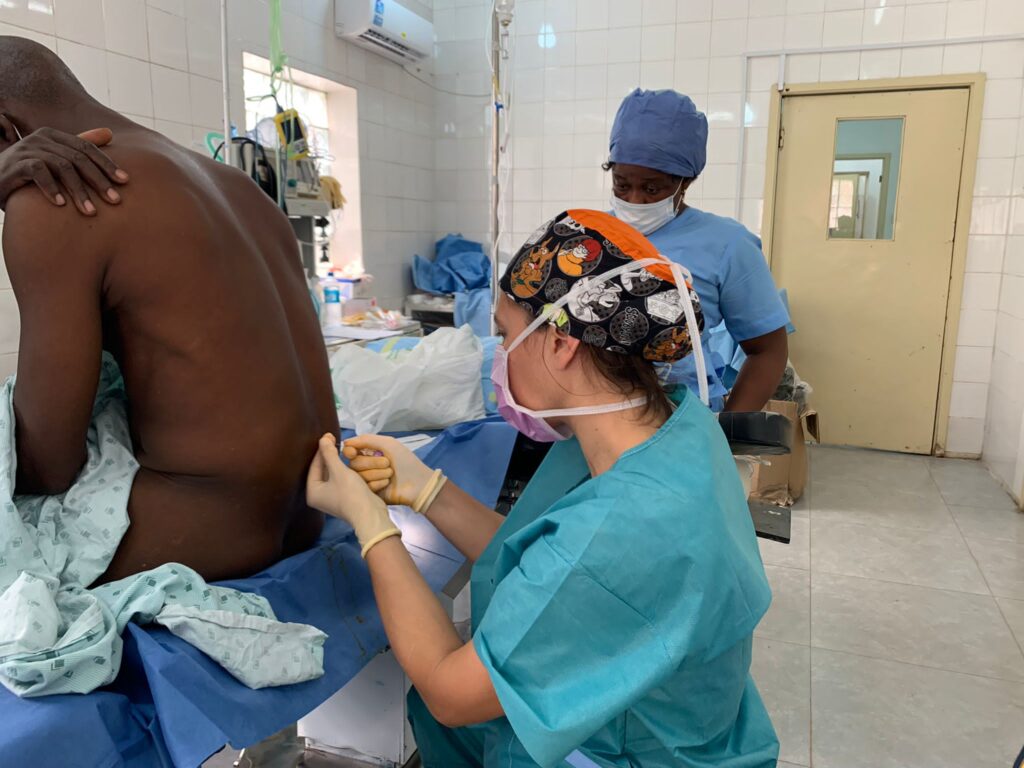
EQUIPMENT (surgical instruments, supplies): There are enough instruments to make several hernia kits. There is a lack of suitable retractors. There is no autoclave and this meant that sometimes there was a lack of STERILE instrument kits to continue with more interventions, but this has improved over the last few days with the help of the local staff and nurses who have optimised the kits by adjusting them to the pathology in which they would be used.
ANAESTHESIA regional and local anaesthesia with sedation was performed, only one patient with an epigastric tumour had to be put to sleep because of pain that did not subside with local anaesthesia and sedation. All the material was carried by the volunteers, as anaesthetic material is scarce or lacking in the hospital.
ASEPSIA AND SURGICAL MATERIALS the hospital does not have an autoclave and all the instruments are washed and prepared in packages that are taken to another hospital every night to be sterilised. For this reason there were only about 10 kits and this prevented us from operating on a larger number of patients each day. This was solved by remaking the kits and adjusting them to the material that was necessary for each procedure.
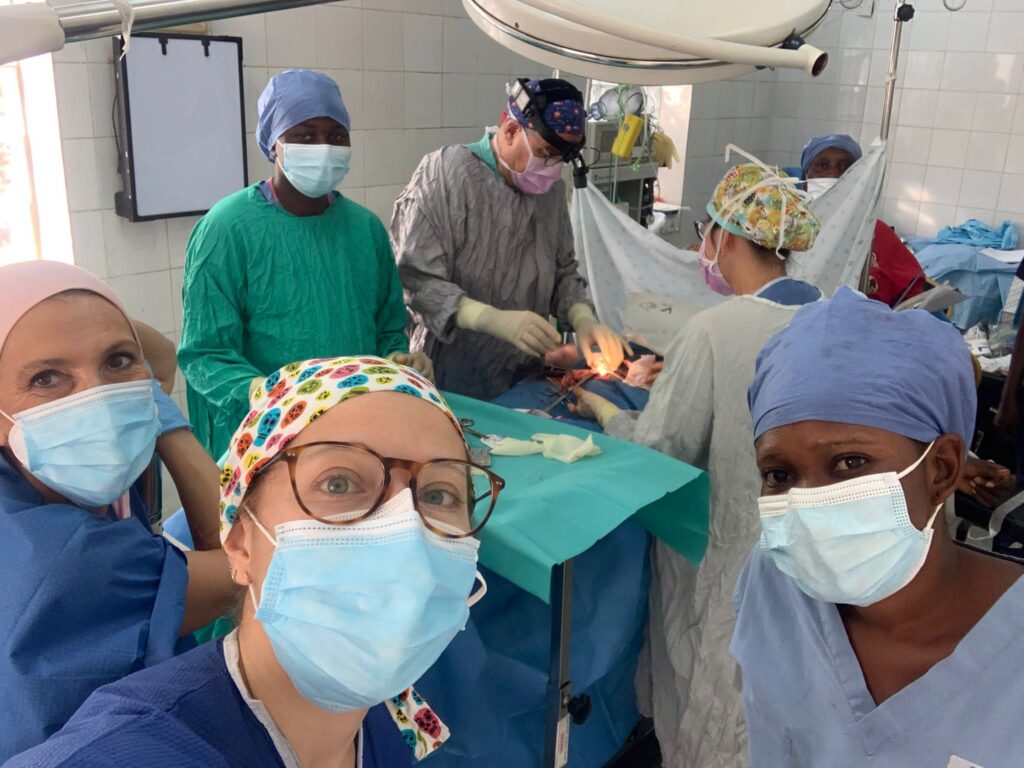
OUR LIFE: We arrived in Freetown on the 4th at 2:00 am, we had left Madrid the day before; Roberto, Faustino Santisteban’s nephew, took some of the material with him. At Freetown airport we had a PCR test and that delayed our departure, there was no ferry at that time. We were picked up by Dr. Samba Jalloh and Mr. Koroma and we all travelled in a police van to our hotel, The Jam Lodge. After a shower and a light meal, we were taken to the hospital where all the equipment had been brought. The nurses tidied up and the anaesthetists and surgeons set about seeing patients and preparing surgical schedules for the following days. Our daily routine from 5-11 March was breakfast at the hotel at 7:00. Transfer to the hospital where we changed and the anaesthetists and nurses prepared the operating theatre and the surgeons visited the patients who had remained from the previous day.
Javier and Cristina started to operate in the large operating theatre, they had no diathermy generator, so they operated without it, and with a professional photophore that Javier had, and in the small operating theatre I operated helped by Kelly Jalloh, surgical technician, with a photophore that was there and when it broke down, with another photophore of Javier Grau’s.
We ate in an adjoining room, food brought by a lady from there, based on pasta, fish or chicken, spices and a piece of fruit. Between operations, we would evaluate more patients in order to continue preparing the surgical schedules for the following days.
Activities after finishing sometimes late, focused on dinner at the hotel 4 nights and another day at a local restaurant. Two nights we dined at beachside restaurants with a nice view and tasted local culinary specialities. On Saturday the 12th we visited the remaining patients, checked a wound in the operating theatre and collected all the material: we packed the scalpel generator and some of the anaesthetic material that was not going to be used there. We said goodbye to all the staff and Dr. Samba Jalloh, Mr. Koroma and the supervisor Mr. Unisa, accompanied us to a resort at the foot of a beach with lots of light and clear water, there we ate and finally we went to a craft market to do some shopping and then to the ferry to get to the airport. We waited for the PCR result that we had done the day before and were able to board the ferry. Everything was over with the objectives achieved.
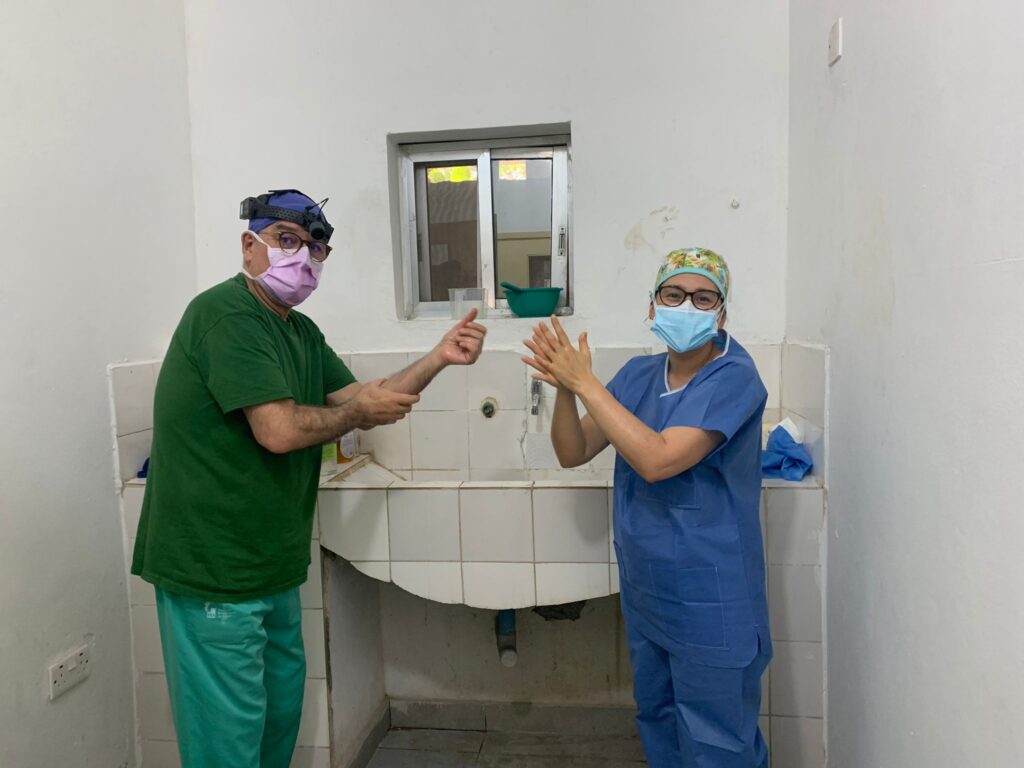
3. CONCLUSION
Strengths of this site: location in the capital. Willingness of all local staff at all levels to help and solve problems if they arise. Security as it is a police hospital and they provide transport and permanent accompaniment. Good patient recruitment.
Objectives for improvement: Equipment of the operating theatres: improve the lighting, fix the 2 diathermy generators that do not work, fix the respirator if you want to operate goitres. An autoclave is required for sterilisation of material as it was sterilised outside. Adjust the kits to the pathology to be operated on so that there is a greater number and more patients can be operated on in one day.
Optimisation of time: Involve all staff so that there is synchronisation and preparation and time between patients is reduced.
4. BUDGET:
COST PER PARTICIPANT: Air ticket 835 € + Hotel single 450 €, double 350 € + meals and ferry airport: 100 € + PCR (2) 120 € + VISA 80 € = 1585- 1485 €.
TOTAL COST OF THE CAMPAIGN: 7 volunteers: 10.600 €.
+ cost of medical supplies.

Teresa Butrón
Team Leader
Surgeons in Action/ Hernia International

